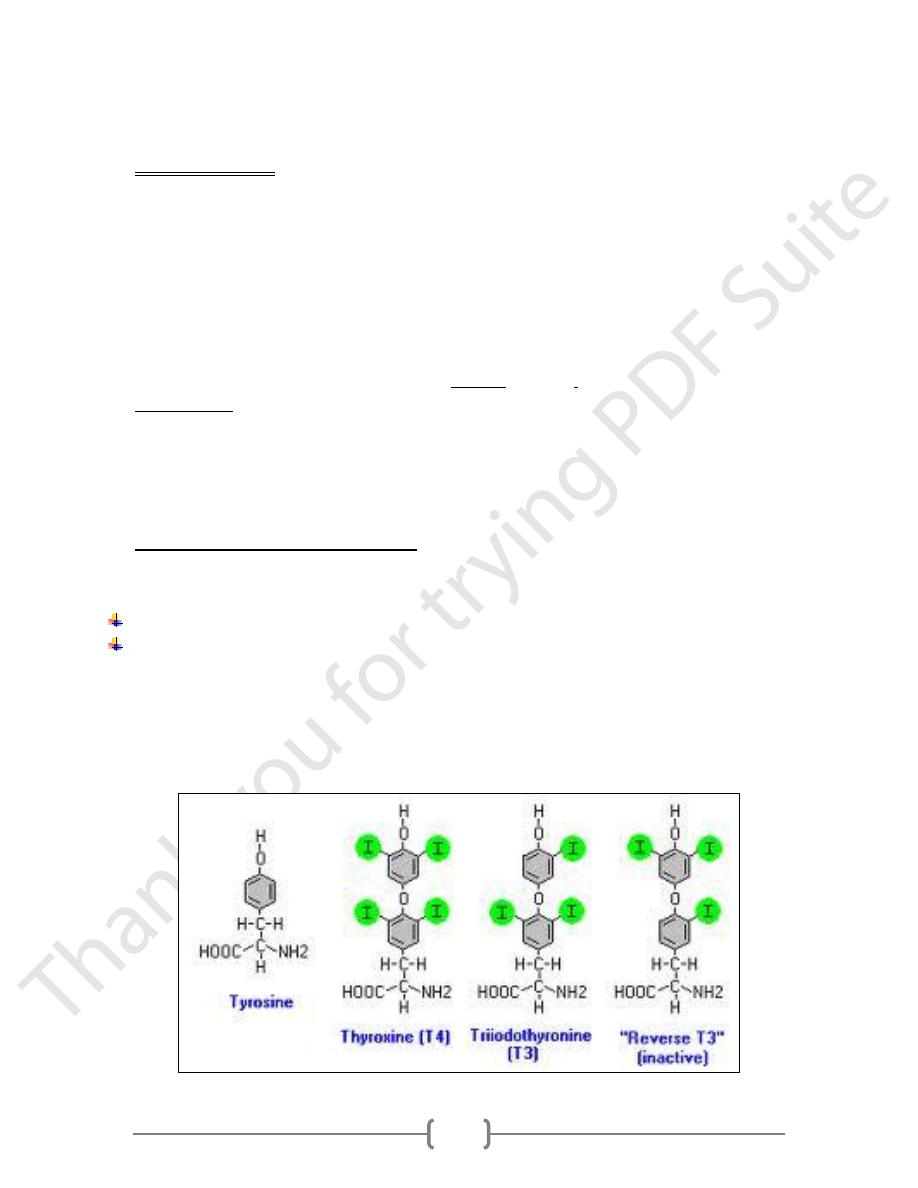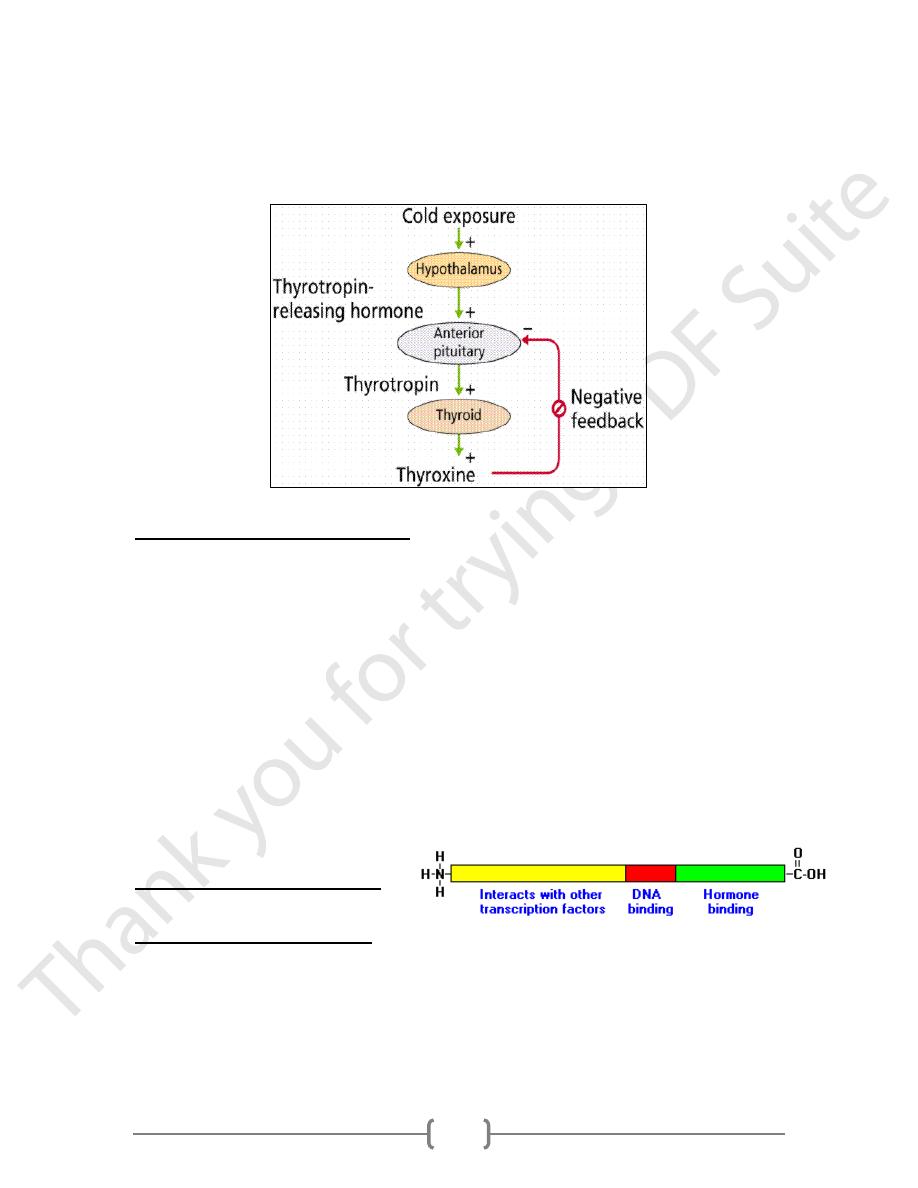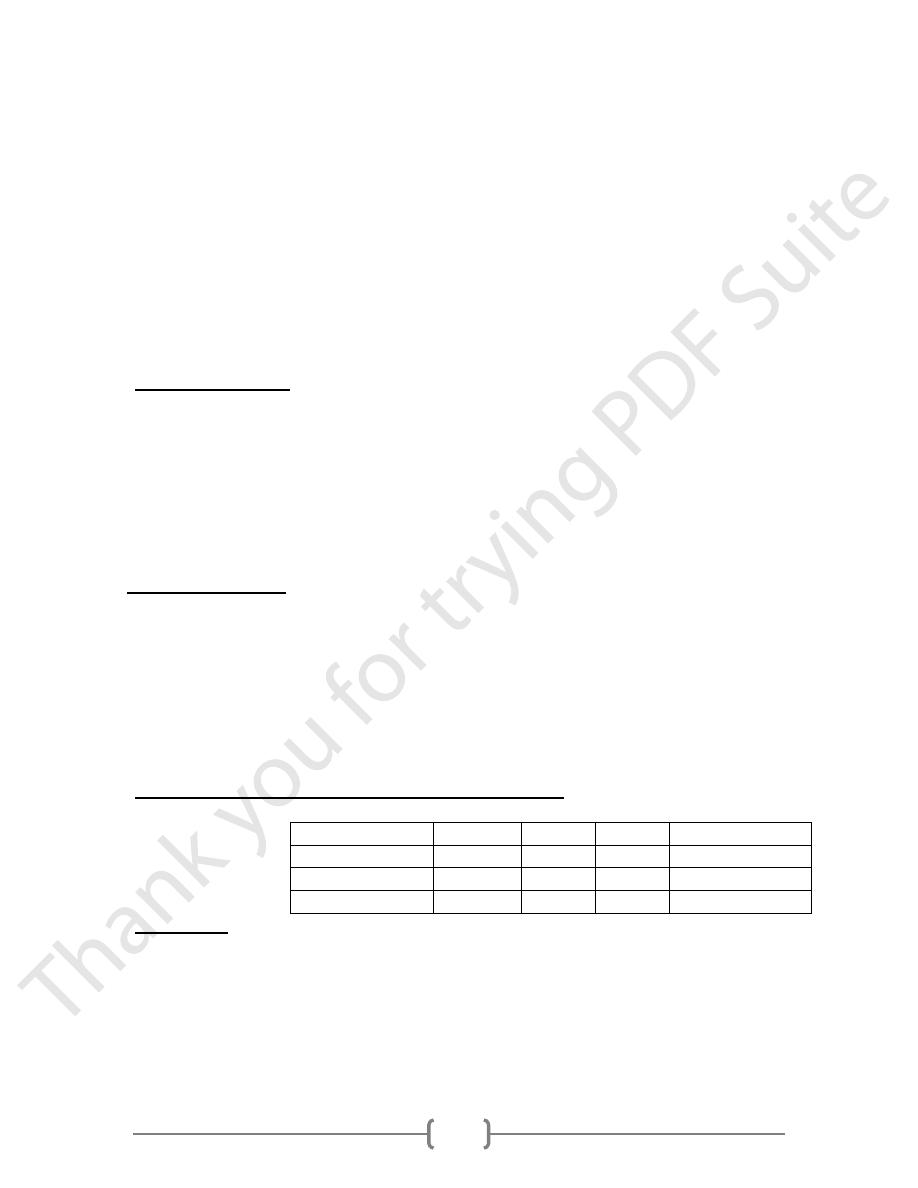
16
Lec. 5: Thyroid hormones
Aim of the lecture:
To know the types of hormones produced by thyroid gland.
Synthesis and metabolism of thyroid hormones
Action and regulation of thyroid hormones.
Disorders of thyroid hormones
The thyroid gland is located in the anterior part of the neck, It has a butterfly shape with
two lobes, these lobes are connected by anarrow bridge called the isthmus.
The thyroid cells are arranged into follicles which are spheres of thyroid cells
surrounding a jellylike substance called the colloid the major component of the colloid is
thyroglobulin which is glycoprotein synthesized by thyroid follicular cells and is rich in
the amino acid tyrosine, some of tyrosyl residues on thyroglobin are iodinated producing
the building blocks of thyroid hormones.
In addition to thyroid epithelial cells, the thyroid gland have other important endocrine
cell called parafollicular or C cells, which secrete the hormone calcitonin.
Structure of thyroid hormones:
Thyroid hormones are derivatives of the amino acid (tyrosine) bound covalently to
iodine. The two principal thyroid hormones are
Thyroxine (known as T4 or tetraiodothyronine)
triiodotyronine(T3).
The thyroid hormones are two molecules of the amino acid tyrosines linked together with
the addition of iodine at three or four positions on the aromatic rings. The number and
position of the iodines is important. Several other iodinated molecules are generated that
have little or no biological activity; e.g. "reverse T3"
.

17
Synthesis of thyroid Hormones:
Thyroid Hormones are Synthesized in the thyroid gland mostly of the trace element
iodine, so iodine metabolism plays a key role in thyroid function, iodine is found in sea
food, dairy products and iodized salts by a process involving :
1) iodide is actively uptaken into the thyroid gland from the plasma by a sodium /iodide
symporter (under the control of TSH),the concentration of iodide in thyroid gland is at
least 20 time its concentration in the plasma.
2) Oxidation of iodide to iodine by thyroid perioxidase.
3) Incorporation of iodine into tyrosyl residues on thyroglobulin in the colloid, so
Monoiodotyrosine (MIT) and di-iodotyrosine (DIT) are formed, this step is catalyzed by
the enzyme thyroid perioxidase.
4) coupling of iodotyrosyl residues in the thyroglobulin molecules &Production of T3
(MIT+DIT) and T4(DIT +DIT )
5) Before secretion of thyroid hormone, thyroglobin is taken up by the follicular cells by a
process involving endocytosis and phagocytosis and t3 and T4 are released by proteolytic
enzymes into the blood, this process is stimulated by TSH, the thyroid hormones are
immediately bound to plasma protein, MIT & DIT released at the same time are de-
iodinated and the iodine is re-used.
Thyroxine a prohormone, the biologically active hormone is T3 ,and about 85% of
plasma T3 is formed by the outer ring monodeiodination of T4 in liver, kidney and
muscle.
Thyroid Hormones in Plasma
Thyroid hormones are lipid soluble, largely bound to protein.
Only about 0.04% - 0.4% of the (TH) circulate "free" in the unbound state.
Only the free hormones enter cells, and produce their biologic effects
Only the free hormone regulates the pituitary feedback mechanism.
There are 3 majorthyroid hormone-binding proteins in plasma.
1) Thyroid Hormone-Binding Globulin (TBG)
2) Thyroxine-Binding Prealbumin(TBPA)
3) Albumin.
Control of Thyroid Hormone Synthesis and Secretion
The hypothalamus senses low circulating levels of thyroid hormone (T3 and T4) and
responds by releasing thyrotropin-releasing hormone (TRH). The TRH stimulates the
pituitary to produce thyroid-stimulating hormone (TSH). The TSH, in turn, stimulates the
thyroid to produce thyroid hormone until levels in the blood return to normal. Thyroid
hormone exerts negative feedback control over the hypothalamus as well as anterior

18
pituitary, thus controlling the release of both TRH from hypothalamus and TSH from
anterior pituitary gland
Control of Thyroid hormone synthesis
Thyroid Hormone Metabolism
T4 is the major secretary product of the normal thyroid.
The major pathway of T4 metabolism is by the progressive deiodination of the molecule.
The initial deiodination of T4 may occur in the outer ring, producing T3 or in the inner
ring, producing reverse T (rT3;)
Less than 20% of total T3 is produced in the thyroid.
The remaining 80-90% is derived from monodeiodination of T4 in the peripheral tissues.
T4 and T3in the plasma are metabolized by the peripheral tissues and subsequently
excreted.
Although the catabolic products of T4 are generally less biologically active than the
parent compound, some metabolites do have biologic activity and, as in the case of T3,
even exceed the biologic potency of T4.
Thyroid hormone Receptor
Thyroid Hormone Actions
Thyroid hormones affect almost every cell in the body.
1) Increases body metabolism by increasing the rate at which cells use oxygen and food to
produce energy.
2) Causes the cardiovascular system to be more sensitive to sympathetic nervous activity &
Increases heart rate and force of contraction of heart muscle.

19
3) Growth and Development:Thyroid hormones are necessary for normal growth in children
, as evidenced by the growth-retardation observed in thyroid deficiency.
Development: normal levels of thyroid hormone are essential to the development of the
fetal and neonatal brain
4) Maintains normal sensitivity of respiratory centers to changes in oxygen and carbon
dioxide concentrations .
5) Effects on Fetal Development:
Important in fetal development, particularly of the neural and skeletal system, thus,
intrauterine hypothyroidism leads to cretinism (mental retardation and dwarfism).
6) Stimulates the formation of red blood cells to enhance oxygen delivery.
Hyperthyroidism
“Hyperthyroidism” refers to over activity of the thyroid gland leading to excessive
synthesis of thyroid hormones The secretion of thyroid hormone is no longer under the
regulatory control of the hypothalamic-pituitary center.
It presents with symptoms such as a, protruding eyes (
exopthalmos
),
palpitations
, excess
sweating
,
diarrhea
,
weight loss
,
muscle weakness
and unusual sensitivity to heat. The
appetite
is
often increased.
Hypothyroidism :
Hypothyroidism is a condition in which the thyroid gland fails to produce enough thyroid
hormone, the most common cause is iodine deficiency, hypothyroidism could be primary
when the defect is in the thyroid gland,or secondary when the defect is in the pituitary or
tertiary when the defect is in the hypothalamus.
Symptoms of hypothyrodism are abnormal weight gain, tiredness, baldness, cold
intolerance, and bradycardia.
Laboratory tests that evaluate thyroid function:
Serum TSH
T3 and free T4
TRH Test.
Calcitonin
Calcitonin is a peptide hormone secreted by the parafollicular or “C” cells of the thyroid
gland
It is synthesized as the preprohormone & released in response to high plasma calcium
Calcitonin acts on bone osteoclasts to reduce bone resorption.
Net result of its action is a decrease in plasma Calcium.
Location of defect defect
TRH
TSH
Thyroid hormone
Thyroid gland
primary
increase
increase
decrease
Pituitary gland
secondary
increase
decrease decrease
Hypothalamus
tertiary
decrease decrease decrease
